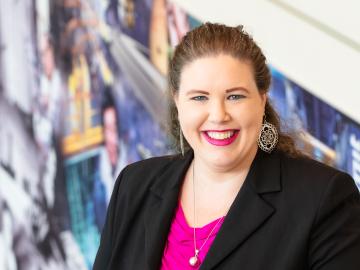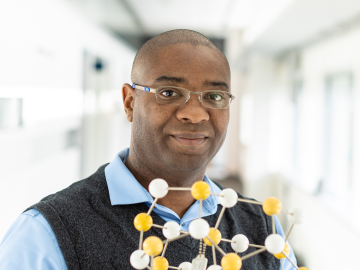
Filter News
Area of Research
- (-) Materials (58)
- (-) Neutron Science (8)
- (-) Supercomputing (21)
- Advanced Manufacturing (14)
- Biology and Environment (16)
- Building Technologies (1)
- Clean Energy (91)
- Computational Biology (1)
- Computer Science (4)
- Electricity and Smart Grid (2)
- Energy Sciences (1)
- Functional Materials for Energy (2)
- Fusion and Fission (9)
- Fusion Energy (6)
- Isotopes (3)
- Materials Characterization (2)
- Materials for Computing (10)
- Materials Under Extremes (1)
- National Security (4)
- Nuclear Science and Technology (2)
- Quantum information Science (4)
- Sensors and Controls (1)
- Transportation Systems (2)
News Type
News Topics
- (-) 3-D Printing/Advanced Manufacturing (13)
- (-) Energy Storage (19)
- (-) Fusion (6)
- (-) Grid (1)
- (-) High-Performance Computing (11)
- (-) Materials (41)
- (-) Quantum Science (8)
- (-) Transportation (11)
- Advanced Reactors (5)
- Artificial Intelligence (6)
- Big Data (5)
- Bioenergy (6)
- Biology (6)
- Biomedical (9)
- Buildings (2)
- Chemical Sciences (12)
- Clean Water (1)
- Climate Change (5)
- Composites (5)
- Computer Science (23)
- Coronavirus (4)
- Critical Materials (8)
- Cybersecurity (3)
- Decarbonization (2)
- Environment (10)
- Exascale Computing (4)
- Frontier (4)
- Irradiation (1)
- Isotopes (4)
- ITER (1)
- Machine Learning (3)
- Materials Science (35)
- Microscopy (14)
- Molten Salt (2)
- Nanotechnology (20)
- National Security (1)
- Neutron Science (33)
- Nuclear Energy (8)
- Partnerships (2)
- Physics (7)
- Polymers (9)
- Quantum Computing (5)
- Security (1)
- Simulation (4)
- Software (1)
- Space Exploration (4)
- Summit (7)
- Sustainable Energy (7)
- Transformational Challenge Reactor (1)
Media Contacts

An advance in a topological insulator material — whose interior behaves like an electrical insulator but whose surface behaves like a conductor — could revolutionize the fields of next-generation electronics and quantum computing, according to scientists at ORNL.

Stan David, retired scientist and Corporate Fellow Emeritus at the Department of Energy’s Oak Ridge National Laboratory, was awarded the Joining and Welding Science Award from the Joining and Welding Research Institute at Osaka University, Japan.

ORNL scientists found that a small tweak created big performance improvements in a type of solid-state battery, a technology considered vital to broader electric vehicle adoption.

Rigoberto Advincula, a renowned scientist at ORNL and professor of Chemical and Biomolecular Engineering at the University of Tennessee, has won the Netzsch North American Thermal Analysis Society Fellows Award for 2023.

Anne Campbell, an R&D associate at ORNL, has been selected for an Emerging Professional award from ASTM International. ASTM, formerly the American Society for Testing and Materials, is an international standards organization that develops and publishes voluntary consensus technical standards for a wide range of materials, products, systems and services.

Valentino “Tino” Cooper, a scientist at ORNL, has been appointed to DOE’s Basic Energy Sciences Advisory Committee for a three-year term. Cooper’s research elucidates the fundamental understanding of advanced materials for next-generation energy and information technologies.

Andrew Lupini, a scientist and inventor at ORNL, has been elected Fellow of the Microscopy Society of America.

A study led by Oak Ridge National Laboratory researchers identifies a new potential application in quantum computing that could be part of the next computational revolution.
Xiao Wang, a research scientist at ORNL, has been named a senior member of the Institute of Electrical and Electronics Engineers, the world’s largest organization for technical professionals. Wang works in the lab’s Computing and Computational Sciences Directorate’s Advanced Computing for Health Sciences Section.

Warming a crystal of the mineral fresnoite, ORNL scientists discovered that excitations called phasons carried heat three times farther and faster than phonons, the excitations that usually carry heat through a material.


